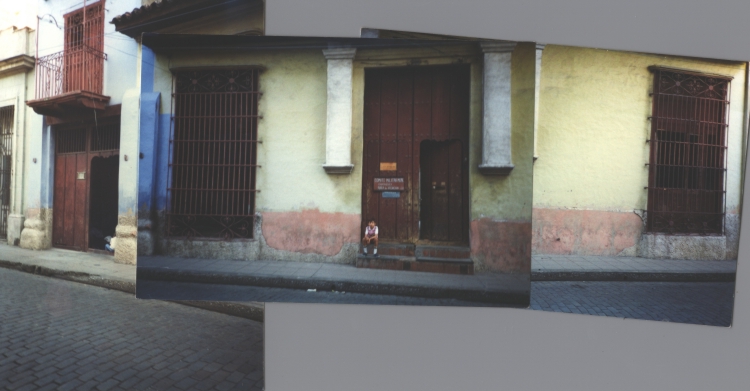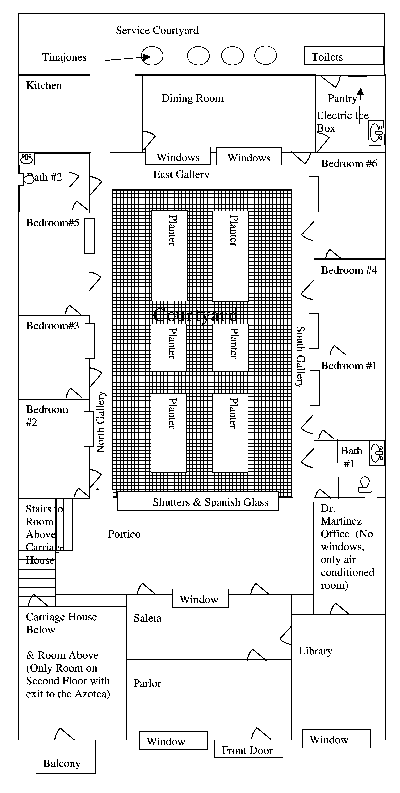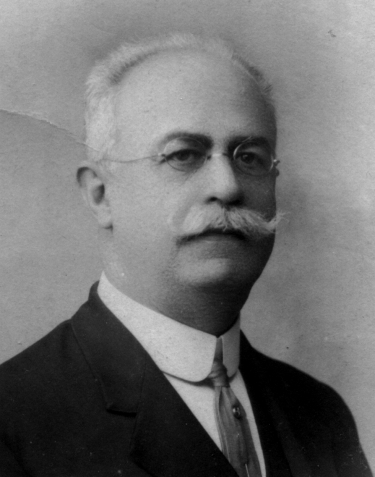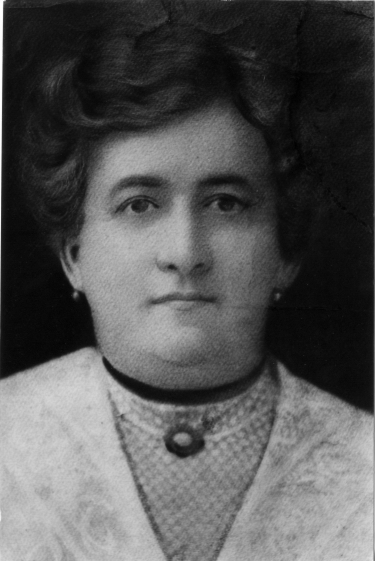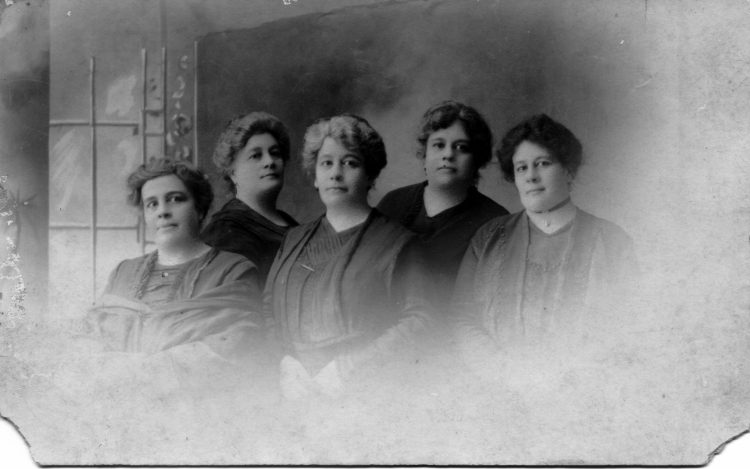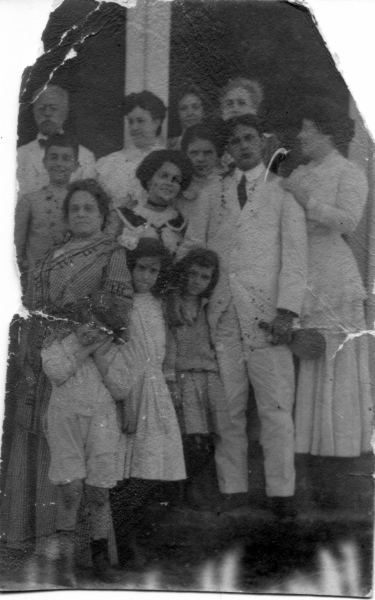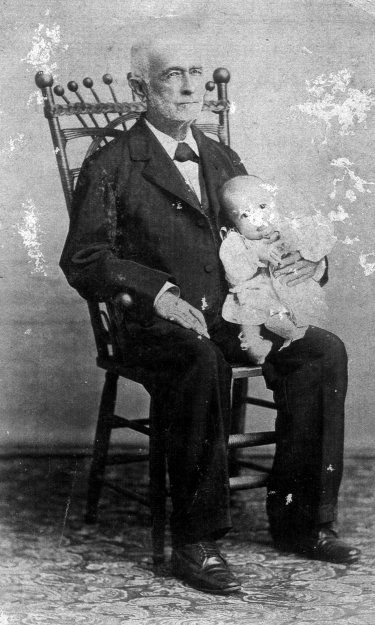República 208
Camagüey, Cuba
(Also known as República 57 before the street number change)
Martínez y Martínez Residence From 1905 Until 1966
The six Martínez Rodríguez children were born and raised in this house
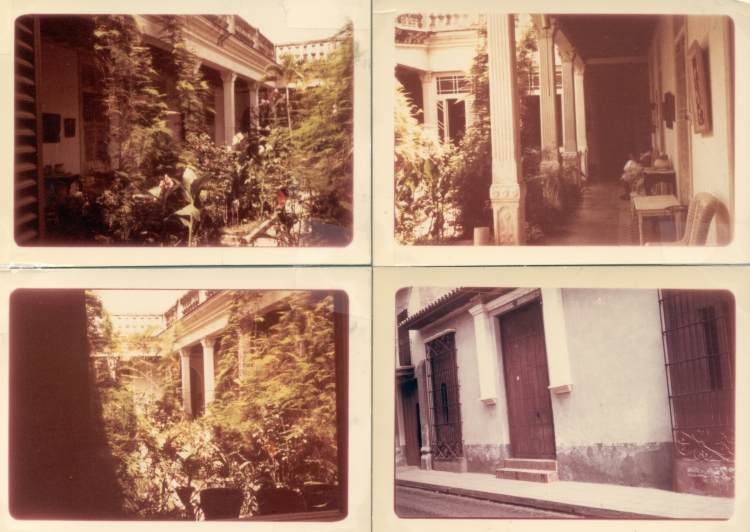
1–4. Central courtyard and galleries; Façade
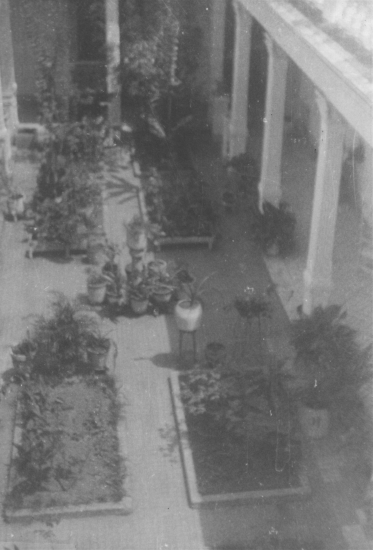
5. View of courtyard from the azotea, the flat portion of the roof over the gallaries, looking towards the rear of the house.
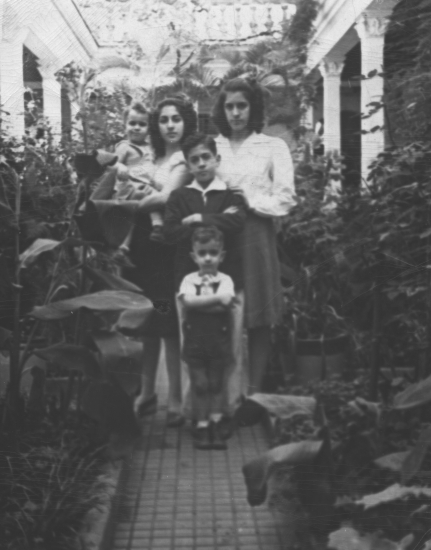
6. Natalia, Elia Maria, Ofelia, Joaquín Ventura and Juan Antonio Martínez Rodríguez
This picture was taken in 1946.
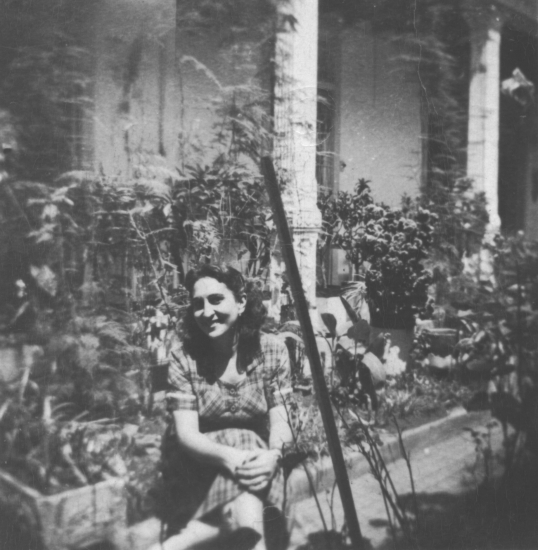
7. Mariana Martínez Rodríguez (1926–2014)
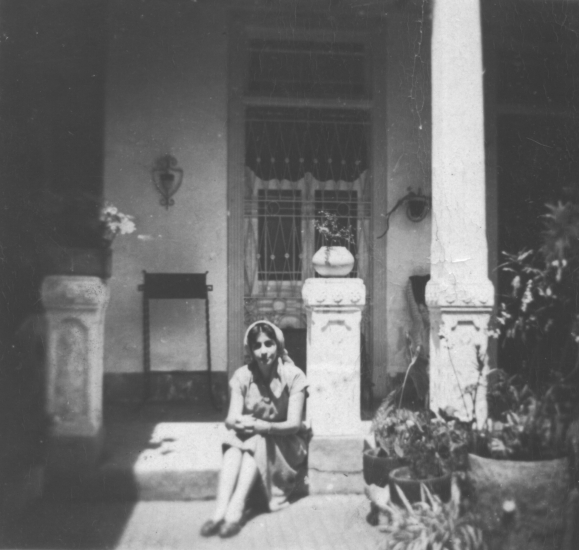
8. Elia María Martínez Rodríguez (b. 1930)
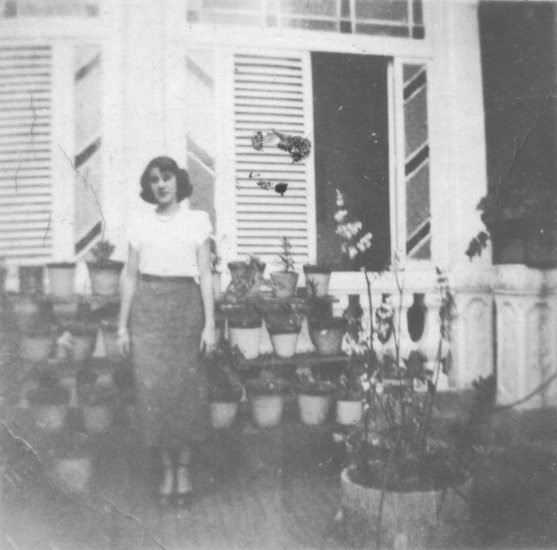
9. Ofelia Martínez Rodríguez (b. 1931). Behind her are the spanish-glass windows and shutters of the portal (portico).
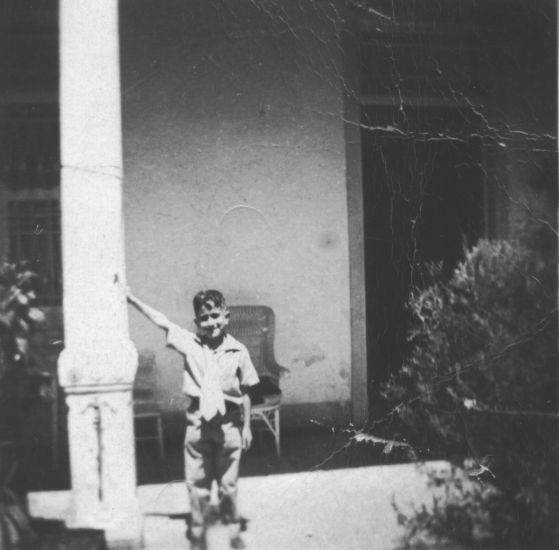
10. Juan Antonio Martínez Rodríguez (1943–2000)
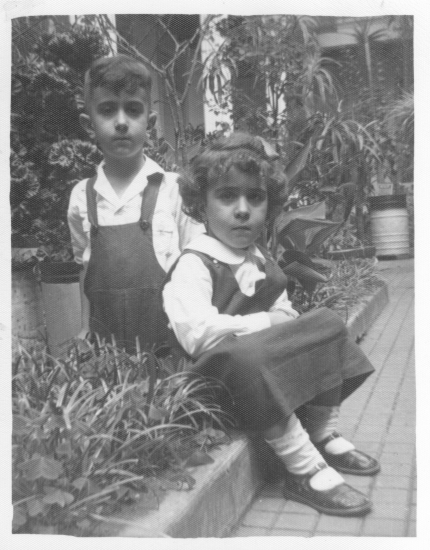
11. Juan Antonio and Natalia Martínez Rodríguez (b. 1944)
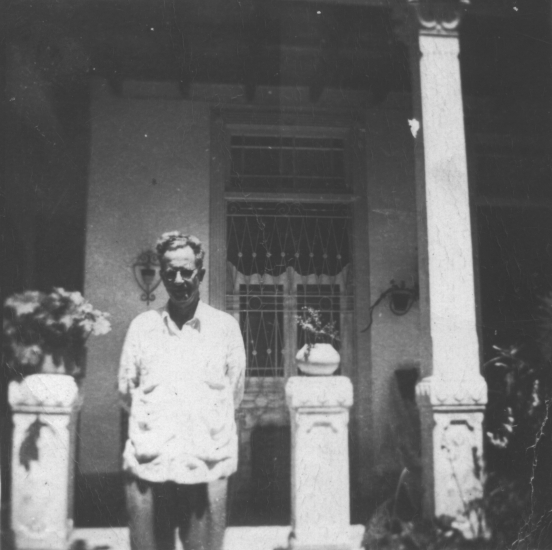
12. Joaquín Ventura Martínez y Martínez (1898–1987)
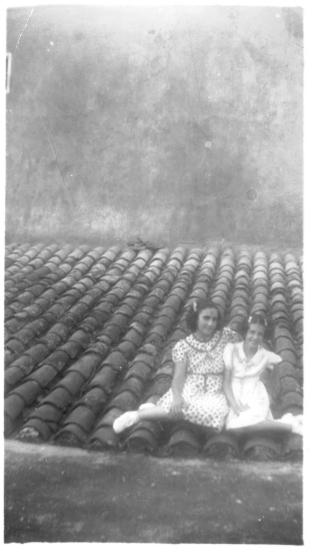
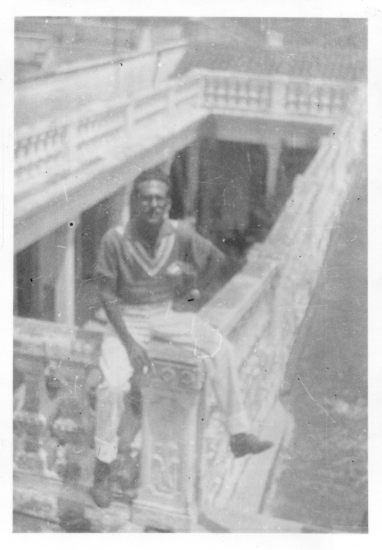
|
13. Mariana Martínez Rodríguez and her cousin Josefina "Fina" Martínez Alvarez, on the terra-cotta roof tiles. | 14. Joaquín Ventura Martínez Rodríguez (b. 1934) on the balustrade overlooking the courtyard. |
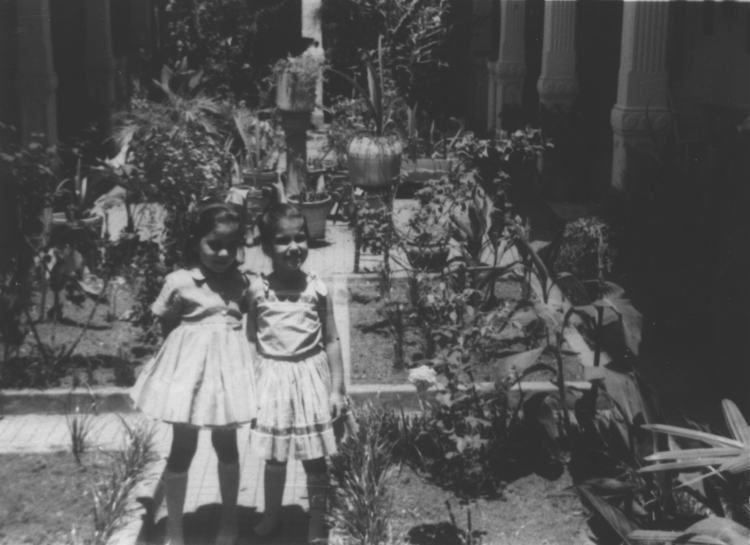
15. Lola Prats Martínez (b. 1955), María López Martínez (b. 1955)
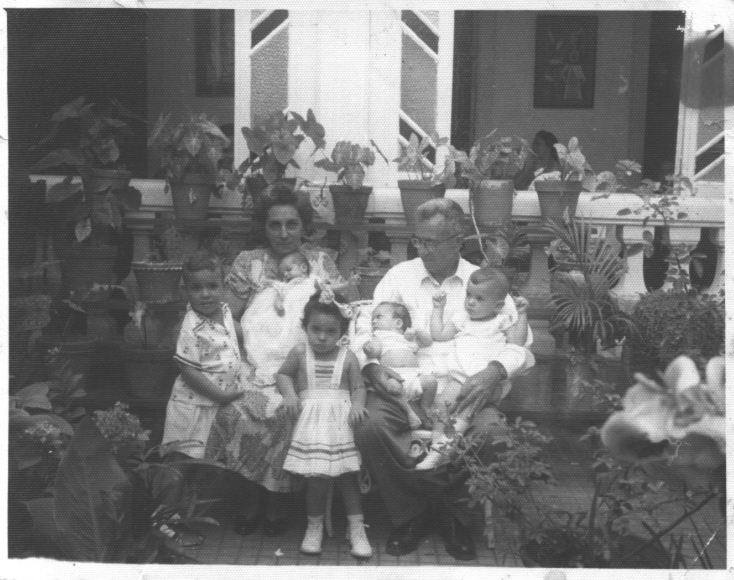
16. Elia Rodríguez Casas (1904–1982) and her husband Joaquín Martínez y Martínez
with grandchildren José Joaquín Prats Martínez (b. 1952), María López Martínez (b. 1955), Elia Margarita Prats (b. 1953) Martínez, Lola Prats Martínez (b. 1955), Benito Prats Martínez (b. 1954). Behind them the portico can be seen because the shutters are open.
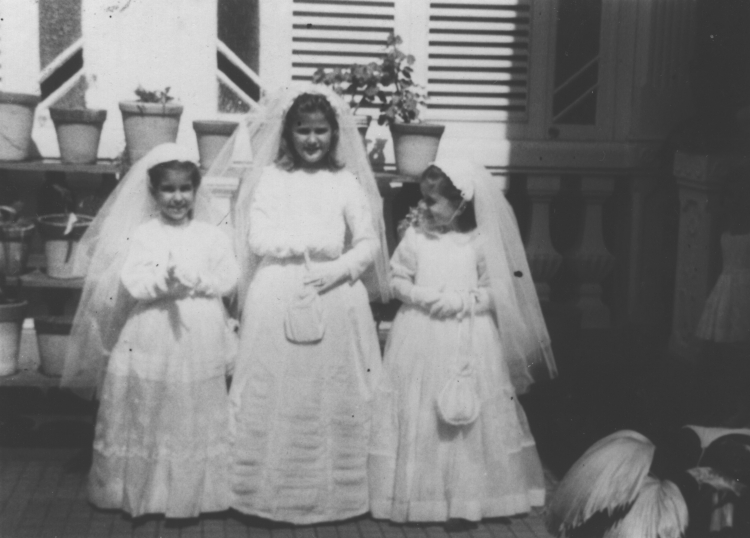
17. María López Martínez, Bertha Rodríguez Hernández, Lola Prats Martínez
First Communion May 24, 1961.
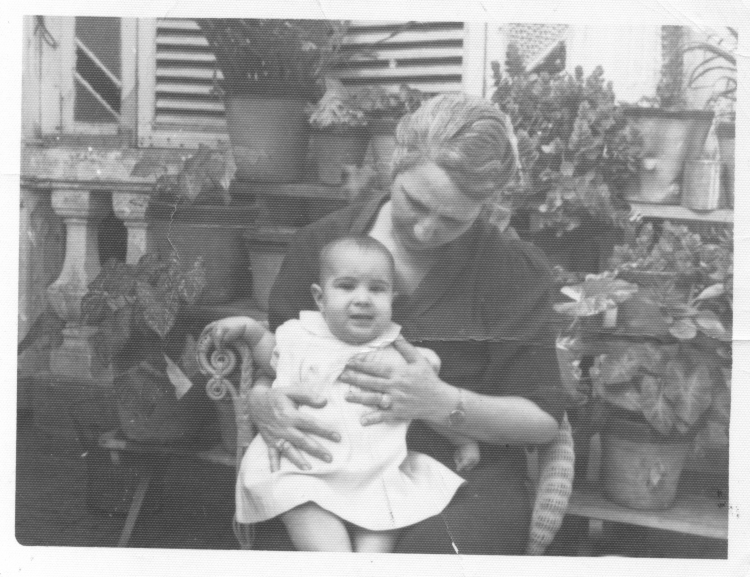
18. Araceli "Celita" Rodríguez Casas (1889-1960) holding Natalia Martínez Rodríguez
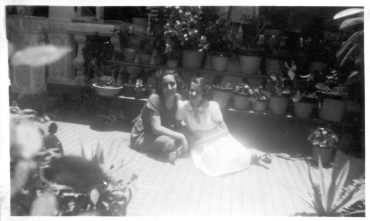
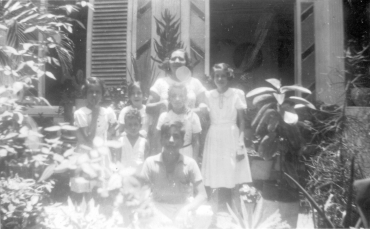
| 19. Mariana Martínez Rodríguez and her cousin Josefina Martínez Alvarez | 20. Concha del Risco, Venturita's nanny,is in the back. In front of her are Alicia Martínez Alvarez, Ofelia Martínez Rodríguez, Elia María Martínez Rodríguez and Josefina Martínez Alvarez. In front of Ofelia is Joaquín Ventura Martínez Rodríguez, known as "Venturita." Alfredo Salvador Rodríguez, a cousin, is in front. |
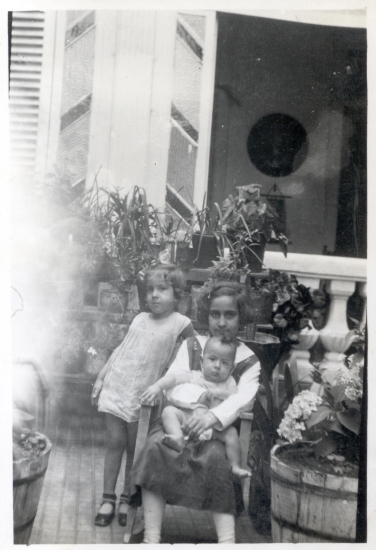
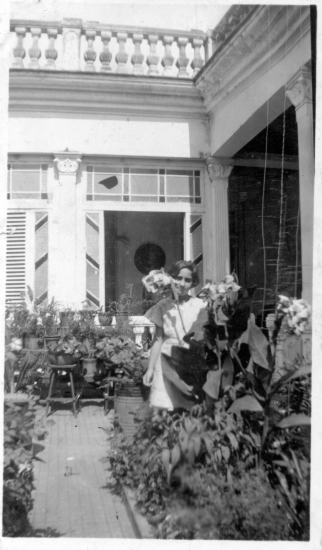
| 21. Elia María, Mariana, and Ofelia Martínez Rodríguez | 22. Mariana Martínez Rodríguez behind the cannas flowering in the courtyard. |
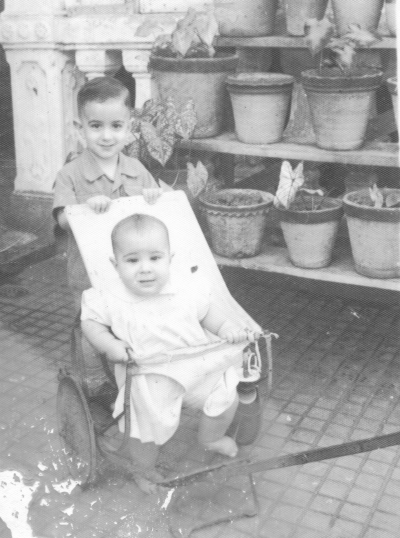
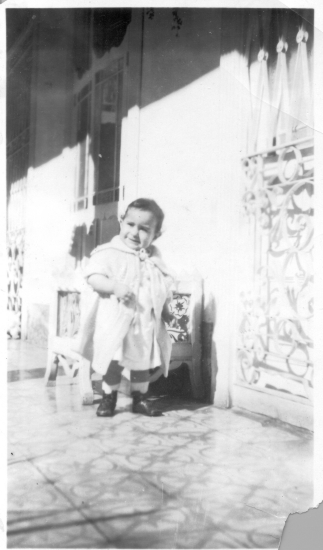
| 23. Juan Antonio Martínez Rodríguez behind his sister Natalia. | 24. Mariana Martínez Rodríguez some 17 years earlier taking in the sun on a cold day. |
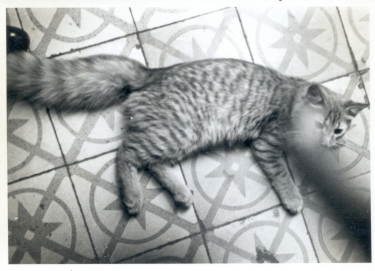
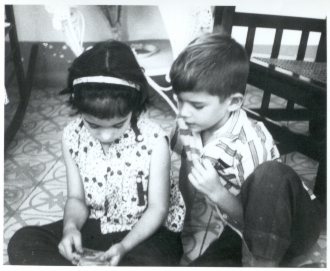
| 25. This is the house cat that taught himself to use the toilet. It was not uncommon to find him spread-eagled on the toilet seat doing his business. | 26. Elia Margarita and Benito Prats Martínez |

27. Benito Prats Respall (1918–2013) and his wife Mariana Martínez Rodríguez; with her mother, uncle and father Elia Rodríguez Casas, Antonio Ricardo (1905–1982) and Joaquín Ventura Martínez y Martínez
and her nephew Miguel Lopéz Martínez, daughter Angela Prats Martínez (b. 1959), nephew Miguel López Martínez, son Ignacio Prats Martínez (b. 1958), and niece María López Martínez
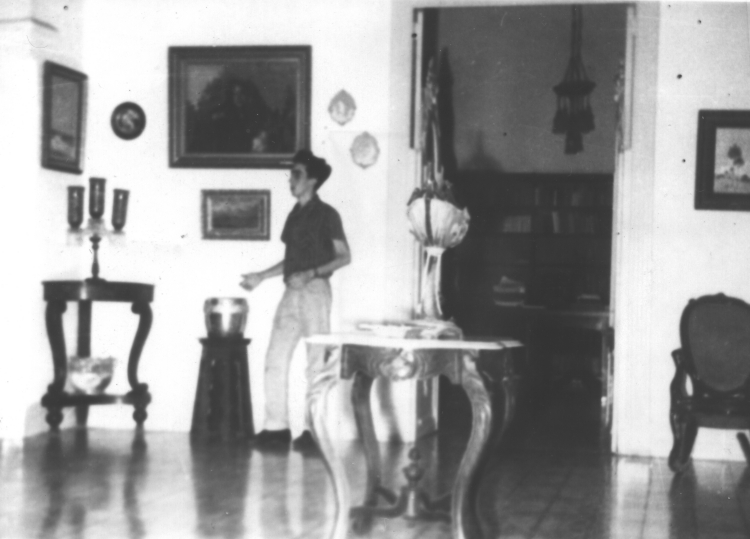
28. Juan Antonio Martínez Rodríguez in the sala (parlor). You can see into the library through the doorway.
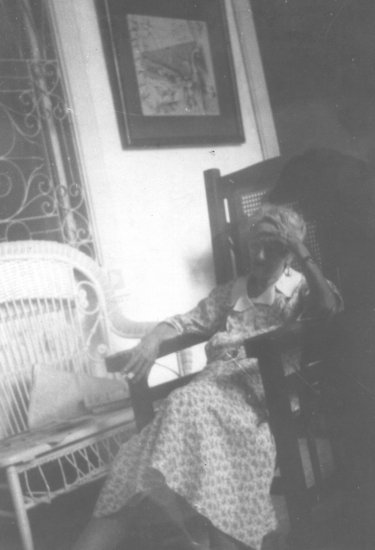
29. Francisca Martínez Seijas (1875–1964)
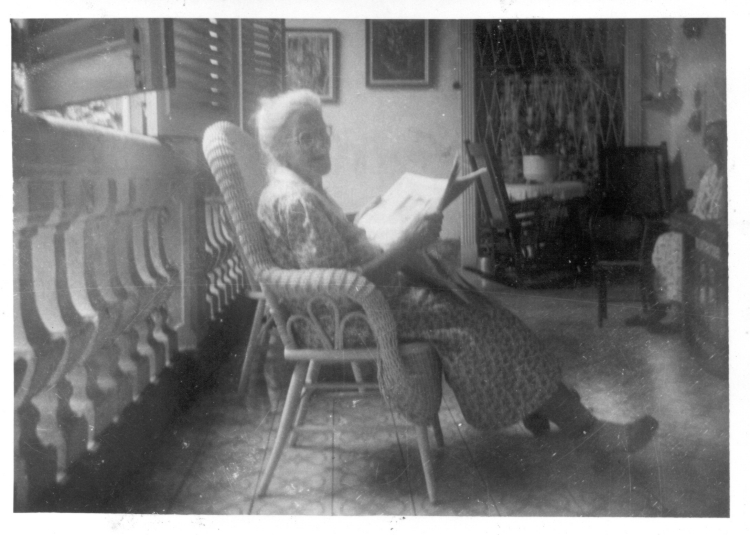
30. Francisca Martínez Seijas in the portal (portico). She was known as "Panchita" and read two newspapesr cover-to-cover every day: the local El Camagüeyano and the Shipping News. The third generation called her "Patita." Tía Menina in her rocking chair is in the background on the right.
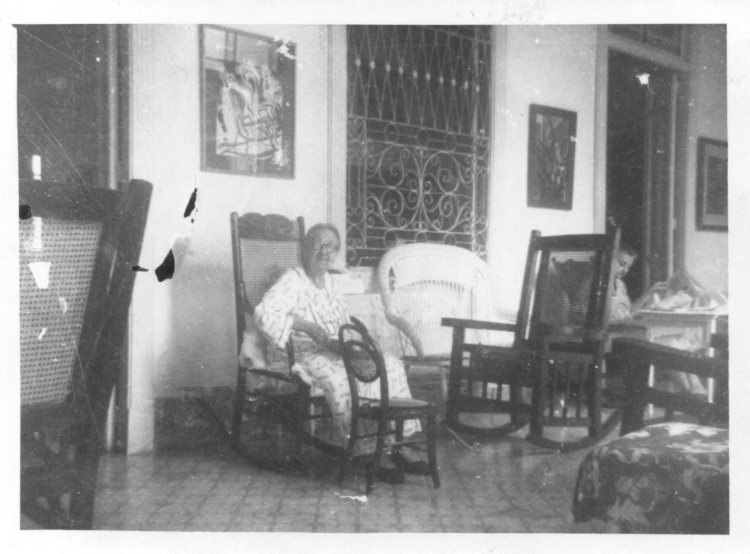
31. Mercedes Martínez Diaz (1865–1965) held court on the portico and ran the household every day, all day, from this chair. She was called "Menina" by everyone until the third generation came along. They called her "Mimí". La Costurera, a woman who came by once a week to sew and darn, can be seen behind the other rocking chair on the right.
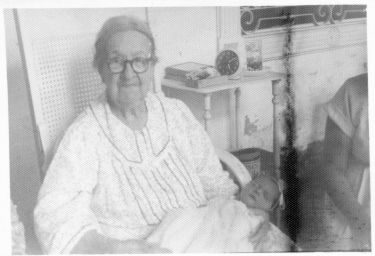
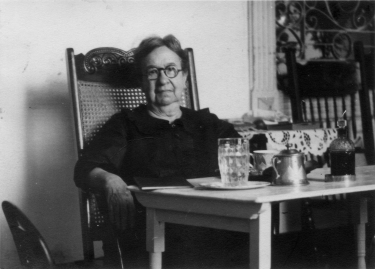
|
32. Menina with her great-grand niece Mariana Lola Prats Martínez. |
33. Menina having her merienda (afternoon snack) some years before. Here is an alternate picture. |
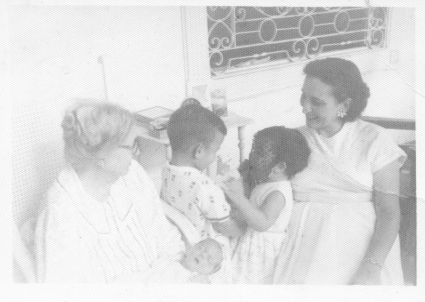
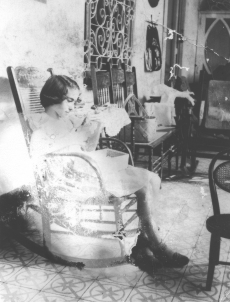
| 34. Menina holding Mariana Lola Prats Martínez with José Prats Martínez, Elia Margarita Prats Martínez (playing with a veil on her face), and their mother Mariana Martínez Rodríguez. | 35. Elia María Martínez Rodríguez in Menina's chair in the portico. She says she did not stay there long! Menina took pity on her because her leg hurt (notice the bandage) but someone shooed her way shortly after the picture was taken. Nobody else sits in Menina's chair! |
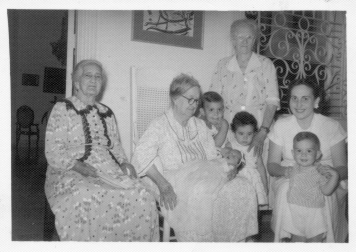
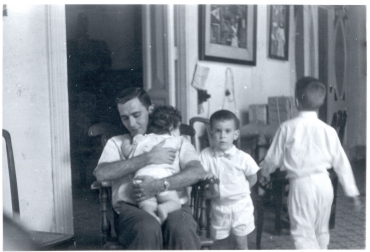
| 36. Rufina Pereira (1874–1969) paternal great grandmother to the children in this photograph is seated on the left next to Menina. Panchita is standing and Mariana Martínez is on the right. Mariana Lola Prats Martínez, just baptized, is on Menina's lap. Her siblings are José, Elia Margarita, and Benito. | 37. Manuel López Blanco (1928–2012) holding his daughter Araceli López Martínez (b. 1963), with two of her brothers José Luis (b. 1960) and Carlos (with back to camera). |
 - Galerias - Republica 208.jpg)
38. Elia Rodríguez Casas and her son Juan Antonio Martínez Rodríguez. Tía Patita is in the background, at the kitchen entrance.

39. Josefina Martínez Alvarez, Mariana Martínez Rodríguez, Elia María Martínez Rodríguez
Margarita Suares Martínez, Mercedes Martínez Diaz, Dulce Maria Martínez Alvarez
Alicia Martínez Alvarez, Joaquín Ventura Martinez Rodríguez, Ofelia Martínez Rodríguez
The door to the dining room is at the rear. Margarita Suares Martínez family was visiting from Havana.
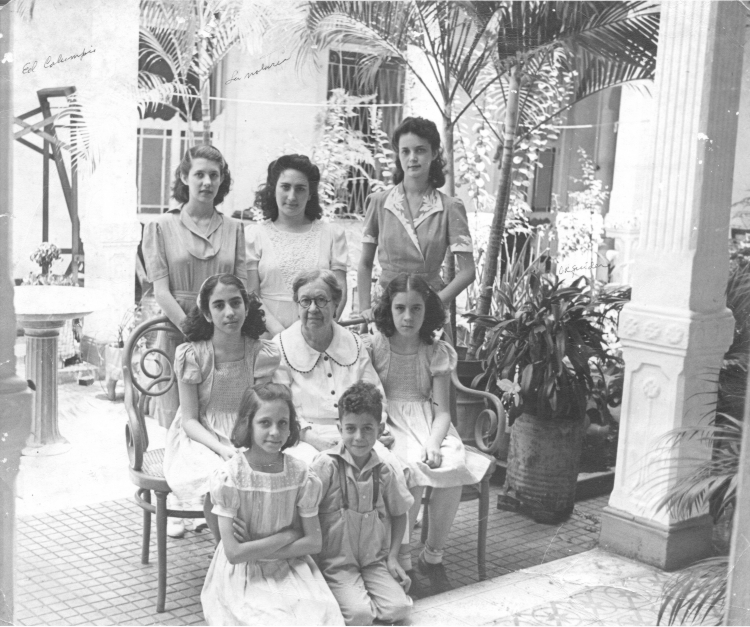
40. Josefina Martínez Alvarez, Mariana Martínez Rodríguez, Dulce Maria Martínez Alvarez
Elia María Martínez Rodríguez, Mercedes Martínez Diaz, Ofelia Martínez Rodríguez
Alicia Martínez Alvarez, Joaquín Ventura Martinez Rodríguez
The children's swing set can be glimpsed on the left. The door and window immediately behind is Joaquín Ventura Martínez's Notary Office. Notice the orchid in the planter on the right.
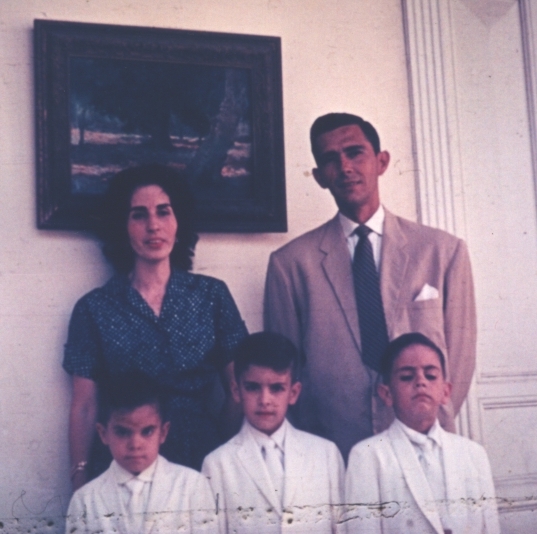
41. Elia María Martínez Rodríguez and her husband Manuel López Blanco
with Ignacio Prats Martínez, Manuel López Martínez (b. 1956), Miguel Lopéz Martínez (b. 1957)
Taken in 1964
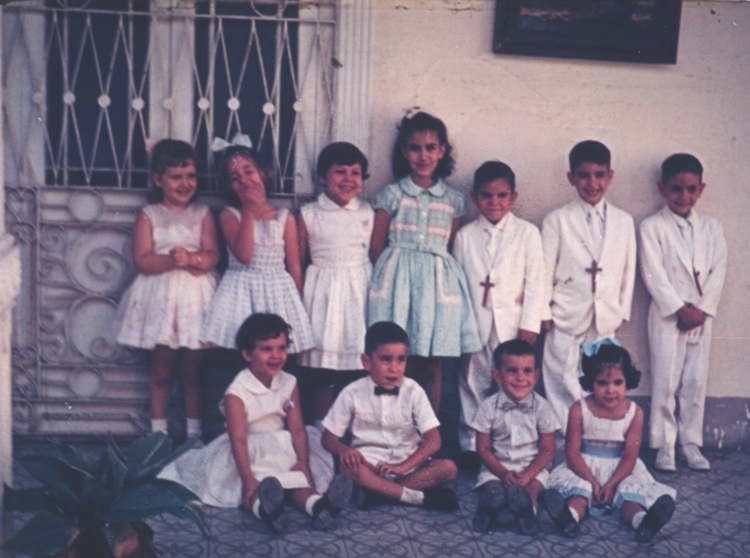
42. Hilda Macias (a friend of the Lopéz children visiting from Nicaro), Ana Elia Mestas Martinez, Teresa Martínez Prats, María Lopéz Martínez, Ignacio Prats Martínez, Manuel López Martínez, Miguel Lopéz Martínez
Seated: Carmen Martínez Prats, Carlos López Martínez (b. 1959), José Luis López Martínez, Angela Prats Martínez
Taken in 1964
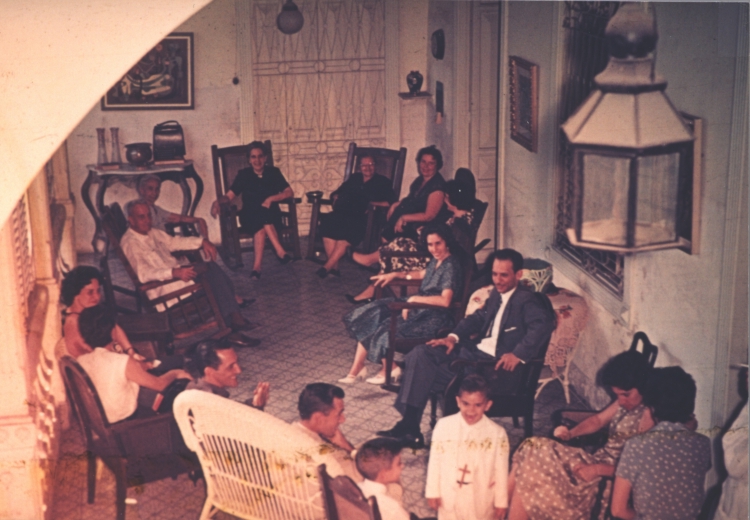
43. Photo of the portico taken from the stairs to the room over the cochera (carriage-room).
Clockwise from rear: Elia Rodríguez Casas, Eduvigis Respall Pereira de Prats (1895–1989), Olga Prats Respall (b. 1924), Mariana Martínez, Elia María Martínez, Carlos Macias (a friend of the López visiting from Nicaro), Ofelia Martínez, Dulce María Martínez Alvarez ( with back to camera), Ignacio Prats, Manuel López Martínez, Manuel López Blanco, Basilio Alejandro Mestas (Ofelia's husband), Unknown, Unknown, Joaquín Ventura Martínez y Martínez, Unknown. The lamp that hangs from the ceiling lighting the stairs is in the foreground right.
Taken in 1964
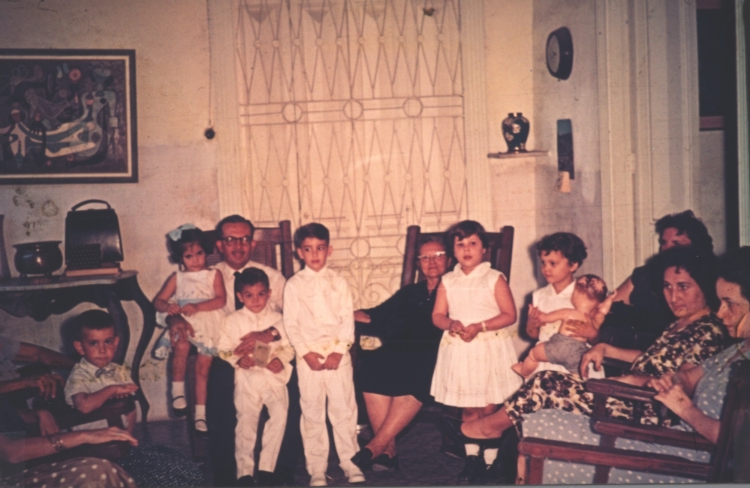
44. José López Martínez, Angela Prats, Benito Prats, Ignacio Prats, Manuel López, Eduvigis Respall, Teresa Martínez, Carmen Martínez, Olga Prats, (mother of the two girls to her right), Mariana Martínez, Dulce María Martínez Alvarez
Taken in 1964
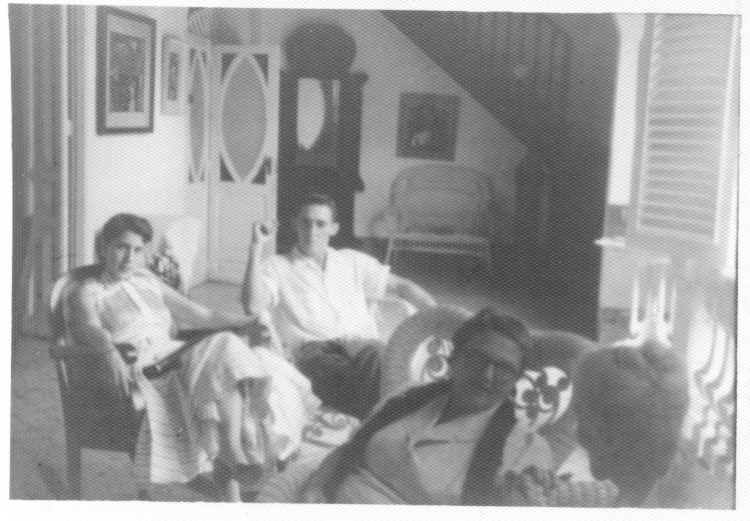
45. View of the portico looking towards the stairs and carriage-room door, which is open. Ofelia Martínez Rodríguez and her husband Basilio Alejandro Mestas; Eduvigis Respall de Prats and her mother, Rufina Pereira, known as "Paita".
